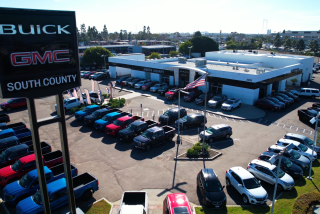GM’s ‘car czar’ pushes for change
DETROIT — As General Motors Corp.’s “car czar,” Bob Lutz has delivered a consistent message to engineers and designers: Abandon business as usual.
When GM was on the way to losing $10.6 billion in 2005, Vice Chairman Lutz was the catalyst behind a successful effort that brought the launch of the new Chevrolet Silverado and GMC Sierra pickup trucks forward by three months.
Getting the revamped GM trucks to dealers last year helped to shore up sagging U.S. sales and beat rival Toyota Motor Corp.’s much-anticipated redesigned Tundra to market by a full quarter. More recently Lutz, 74, has had Toyota in his sights again by pushing GM development teams to leapfrog the Japanese automaker in areas such as electric vehicles, say people familiar with the effort.
Although Chief Executive Rick Wagoner was in the hot seat in 2006 as the automaker slashed costs and shut plants after the massive 2005 loss, analysts said, the next stage of GM’s turnaround would hinge on efforts spearheaded by Lutz, who leads global product development.
“Lutz is a man with vision and discipline,” said David Cole, chairman of the Center for Automotive Research in Ann Arbor, Mich. “Most importantly, he has an absolute passion for the product.”
In the last two years, Lutz has pushed for change in areas in which he acknowledges GM has trailed competitors, such as design, quality of interiors and the time it takes to bring new vehicles to market.
“GM has such a reputational deficit to overcome that it has to be very good for a few years before people actually get it,” Lutz said in a recent interview.
The executive, known for his blunt outspokenness, is a former fighter pilot who sometimes flies his helicopter to work, buzzing over the glass GM towers on the Detroit River to a helipad nearby.
He began his career at GM Europe in 1963 and went on to BMW, Ford Motor Co. and the former Chrysler Corp. before retiring in 1998.
Asked by Wagoner to rejoin GM in 2001, Lutz came back with a mandate to overhaul the automaker’s approach to its products based on a tough-minded assessment of its problems.
“When I came back to GM, the Japanese and Germans were way ahead of us in quality,” Lutz said. “And that gave everyone a bad impression, especially import owners.
“They would rent a GM car at the airport, drive it and it would be OK, but everything they looked at was gray and depressing and inexpensive-looking. And they thought, ‘Now, I know why I’ll never buy an American car, particularly not one from GM.’ So we had to fix that.”
Lutz also is changing the way GM engineers its products in a bid to cut costs and show that the automaker -- whose partnership talks with Nissan Motor Co. and Renault ended in October -- does not need an alliance partner to prosper.
A U.S.-based team will focus on sport utility vehicles and pickup trucks for GM while counterparts in Europe will handle mid-size cars, ensuring that the automaker uses fewer vehicle platforms around the world.
With GM only about halfway to its goal of dropping structural costs to 25% of revenue from 34%, the effort could help the company save billions of dollars by creating major economies of scale, analysts say.
For example, the Saturn Astra, a U.S. version of the German Opel of that name, will hit American showrooms next fall. The Astra will be made in Antwerp, Belgium. By 2009, the once-ailing brand will have three cars from Opel, each relabeled as a Saturn.
“Design has to lead the creative process,” Lutz said
Lutz said he was optimistic about this year, when several products he has helped steer would go on the market.
GM will launch the redesigned Chevrolet Malibu. The company also has well-reviewed crossovers -- car-based utility vehicles that are smaller than traditional SUVs -- such as the GMC Acadia, the Saturn Outlook and the Buick Enclave.
“If this product line doesn’t do well, then I’m out of ideas,” Lutz said.
GM, whose sales were down 8.3% through November from the first 11 months of 2005, still faces risks this year.
A slowing economy is likely to cause an overall industry decline in sales, and weakness in the housing market is expected to hurt pickup sales. GM also needs to work on connecting with younger customers, analysts have said.
In any case, industry watchers say, the next phase of GM’s turnaround will largely be influenced by the success of its new models.
“This product resurrection that GM is in the midst of right now, they would not have ... without Bob Lutz,” said analyst Erich Merkle of IRN Inc. in Grand Rapids, Mich. “You can restructure, reorganize; you can right-size.... But if you do not have the right product in place, no turnaround can exist.”
GM’s board last month increased Lutz’s retirement benefits by $3.4 million, sparking speculation that he could be nearing the end of his run at the automaker.
“I think it would be safe to think, at 75, that your career has peaked,” he said. “But am I going anywhere? No. I’m very happy with my role at GM and will be here for a little while.”






